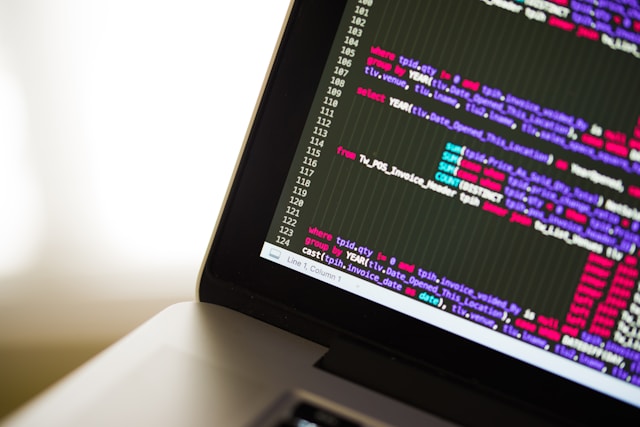Nowadays, the internet has become an integral part of our daily lives. We use it for communication, shopping, banking, and entertainment. However, this increased reliance on the internet also means that we are more vulnerable to online threats. This is why it’s essential to learn how to protect your information and keep your personal data safe online.
In this digital age, safeguarding your online presence is more important than ever. As you navigate the world wide web, you may be unknowingly leaving a trail of personal information behind. Cybercriminals can exploit this data, leading to identity theft or financial loss. In this article, we’ll explore the importance of protecting your digital life and provide you with practical advice on how to keep your personal information safe online.
So, let’s dive in and discover how to protect your personal information and make your online experience more secure.
Understanding the Risks: Why Protecting Your Digital Life is Essential
Before we delve into the best practices for online security, it’s important to understand the risks. Cybercrime is on the rise, and the consequences can be devastating. In 2020, the number of data breaches increased by 273% compared to the previous year, affecting millions of people worldwide. This highlights the importance of learning how to protect personal information from potential cyber threats.
One of the most common risks is identity theft, where criminals use your personal information to impersonate you and commit fraud. This can range from taking out loans in your name to filing false tax returns. The damage caused by identity theft can be long-lasting and difficult to repair, making it crucial to protect your personal information.
Another risk is financial loss. Cybercriminals can use your personal data to gain access to your bank accounts or credit cards, draining your funds or making unauthorised purchases. Protecting your personal information is not just about keeping your identity safe; it’s also about safeguarding your financial well-being.
Importance of Safeguarding Your Digital Life
In addition to the risks mentioned above, there are numerous other reasons why it’s essential to protect your personal information online:
- Privacy: As internet users, we have the right to privacy. Our personal information should remain confidential and not be shared without our consent. Protecting your digital life ensures that your private information remains just that – private.
- Reputation: Cybercriminals can use your personal information to create fake profiles or post damaging content that can harm your reputation. This can have serious consequences, both personally and professionally.
- Emotional Well-Being: Having your personal information stolen or misused can lead to feelings of vulnerability, stress, and anxiety. By taking steps to protect your digital life, you can avoid these negative emotions and enjoy a more secure online experience.
Best Practices for Creating Strong Passwords
One of the easiest and most effective ways to protect your personal information is by creating strong, unique passwords for each of your online accounts. Here are some tips on how to do just that:
- Length: A longer password is generally more secure. Aim for at least 12 characters, and try to include a mix of upper and lowercase letters, numbers, and special characters.
- Avoid Common Words and Phrases: Cybercriminals often use dictionary attacks, where they try millions of common words and phrases to guess your password. To protect your personal information, avoid using easily guessable terms or phrases.
- Use a Passphrase: Instead of a single word, consider using a memorable passphrase. For example, the phrase “I love to eat chocolate cake on Sundays” can be shortened to “ILtECc@S” by using the first letter of each word and replacing “on” with the special character “@”.
Use Two-Factor Authentication for Added Protection
Two-factor authentication (2FA) is an additional layer of security that requires you to provide a second form of verification when logging into an account. This can include a fingerprint, a text message with a unique code, or a verification app like Google Authenticator.
By enabling 2FA on your accounts, you make it more difficult for cybercriminals to access your personal information, even if they manage to crack your password. Many online services now offer 2FA as an option, so be sure to take advantage of this added protection.
Safeguarding Your Personal Information on Social Media
Social media platforms are a treasure trove of personal information. To protect your digital life, follow these best practices:
- Review Your Privacy Settings: Ensure that your social media accounts are set to private, and only share your personal information with people you trust. Regularly review and update your privacy settings to stay in control of your data.
- Limit the Information You Share: Be cautious about the personal details you share on social media. Avoid posting your full birthdate, address, or phone number, as these can be used by cybercriminals to steal your identity.
- Be Wary of Third-Party Apps: Many social media platforms allow you to connect with third-party apps. These apps may request access to your personal information, so be sure to review their privacy policies and only connect with trusted services.
Be Cautious with Public Wi-Fi and Secure Your Home Network
Public Wi-Fi networks can be convenient, but they can also pose a risk to your personal information. Cybercriminals can intercept your data or set up fake Wi-Fi hotspots to steal your information. To protect your digital life, avoid using public Wi-Fi for sensitive activities like online banking or shopping.
Instead, use a virtual private network (VPN) to encrypt your data and hide your online activity. A VPN creates a secure, encrypted tunnel between your device and the internet, ensuring that your personal information remains private.
Additionally, secure your home network by changing the default password on your router, updating its firmware, and enabling WPA3 encryption. This will help to keep your personal information safe from cybercriminals looking to exploit vulnerable networks.
Protecting Your Personal Information While Shopping Online
Online shopping offers convenience and variety, but it also comes with risks. To protect your personal information while shopping online, follow these tips:
- Shop on Secure Websites: Look for websites with “https” in the URL and a padlock symbol in the address bar. These sites use encryption to protect your personal information during transmission.
- Use a Credit Card or Secure Payment Service: Credit cards offer better fraud protection than debit cards. Alternatively, consider using a secure payment service like PayPal, which allows you to make purchases without sharing your financial information with the retailer.
- Monitor Your Accounts: Regularly check your bank and credit card statements for any unauthorised transactions. If you spot any suspicious activity, report it immediately to your financial institution.
Utilising Secure Messaging Apps and Email Providers
When communicating online, it’s important to protect your personal information from prying eyes. Here’s how:
- Use End-to-End Encryption: Choose a messaging app that offers end-to-end encryption, like WhatsApp or Signal. This means that your messages are encrypted on your device and can only be decrypted by the intended recipient, ensuring that no one else can intercept or read them.
- Be Cautious with Email Attachments: Cybercriminals often use email attachments to spread malware or steal your personal information. To protect your digital life, only open attachments from trusted sources, and scan them with antivirus software before opening.
- Consider a Secure Email Provider: Some email providers prioritise privacy and security, offering features like end-to-end encryption and zero access to your data. Examples include ProtonMail and Tutanota.
Recognising and Avoiding Phishing Scams and Online Fraud
Phishing scams are a common tactic used by cybercriminals to steal your personal information. To protect yourself, be on the lookout for these red flags:
- Unexpected or Unsolicited Emails: Be wary of emails from unknown senders or those that seem out of the blue. Cybercriminals often use phishing emails to trick you into clicking on malicious links or downloading malware.
- Urgent or Threatening Language: Scammers often use urgent or threatening language to create a sense of panic and prompt you to act quickly. If an email demands immediate action or threatens consequences, take a step back and verify its legitimacy.
- Mismatched URLs or Poor Grammar: Phishing emails may contain mismatched URLs or poor grammar and spelling. Hover over any links to check the actual destination, and be cautious of emails that seem unprofessional.
To protect your personal information, never click on suspicious links or provide your personal information in response to an unsolicited email.
Regularly Monitoring and Updating Your Online Accounts
Keeping your online accounts up-to-date and monitoring them regularly is essential for protecting your personal information. Here’s what to do:
- Regularly Review Your Account Activity: Check your accounts for any suspicious activity or unauthorised access. If you notice anything unusual, report it immediately and change your passwords.
- Update Your Personal Information: Ensure that your contact information, such as your email address and phone number, is up-to-date so that you can receive important notifications or alerts.
- Delete Unused Accounts: If you have accounts on websites or services that you no longer use, consider deleting or deactivating them. This reduces your digital footprint and minimises the risk of your personal information being compromised.
Keep Your Devices and Software Up-To-Date
Outdated devices and software can contain security vulnerabilities that cybercriminals can exploit to access your personal information. To stay protected, follow these tips:
- Install Updates Promptly: Regularly update your devices, operating systems, and software to ensure that you are protected against the latest security threats.
- Use Antivirus Software: Install reputable antivirus software on your devices and keep it up-to-date. This will help to protect your personal information from malware and other online threats.
- Enable Automatic Updates: If possible, enable automatic updates for your devices and software. This ensures that you always have the latest security patches and updates installed.
Properly Managing and Disposing of Your Digital Devices
When it’s time to replace your digital devices, it’s important to dispose of them properly to protect your personal information. Here’s how:
- Wipe Your Data: Before disposing of your device, perform a factory reset or use a data-wiping tool to erase all of your personal information.
- Remove SIM Cards and External Storage: Don’t forget to remove any SIM cards or external storage, like SD cards, from your devices before disposing of them.
- Recycle Responsibly: Dispose of your digital devices at a certified e-waste recycling facility to ensure that your personal information is not compromised.
Stay Vigilant and Proactive in Protecting Your Digital Life
Protecting your digital life is an ongoing process that requires vigilance and proactive measures. By following the tips and best practices outlined in this article, you can minimise the risks and keep your personal information safe online.
Remember, your digital security is your responsibility. Don’t leave your online safety to chance – take control of your digital life today!
Protect Your Personal Data with Confidence!
Choose Nueva, Australia’s Leading Cyber Security Expert.







